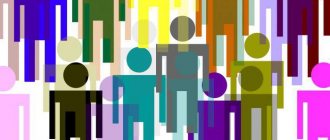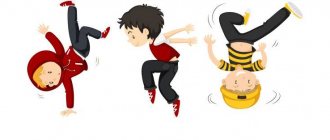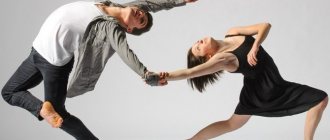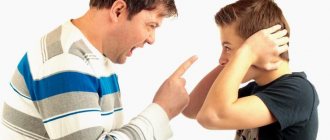Movement is life. Movement helps us burn extra calories, get rid of extra pounds, improve our mood, and feel alive. Being active helps you stay fit and stay healthy for many years.
The body needs to move, this is the natural need of our body. Which many have long forgotten about. The word activity, I think, does not need to be deciphered, and everything is clear. And an active life is even better. Do you, dear reader, know what types of physical activity exist?
Sport and health
Sport occupies an important place in the life of every person. The desire to give or not give the body physical activity has nothing to do with it. To be healthy, the body needs movement and tension. Physical activity is the first and most important condition for health. Movement accompanies a person from birth. A newborn baby actively waves its legs and arms to stretch aching muscles. Once a child learns to walk, it is very difficult to keep him in place. The body itself forces the baby to run and jump. This brings great pleasure to all muscles.
Modern living conditions do not always allow a person to devote enough time to his physical health. This is very bad, because health is the main thing. No matter how busy your work schedule, you need to find time for at least an active warm-up. Regular, even small, exercise can significantly improve your overall health, boost your immunity and mood. In order to exercise effectively, you need to know what types of physical activity are suitable for you - that’s what today’s article is about.
Society as a subject of education of activity
The state is extremely interested in educating active and proactive citizens. That is why any educational institution, the media, among other tasks, set themselves the difficult task of creating activity among the population.
Teachers, psychologists, social workers, cultural workers, public associations, leaders of all ranks act as subjects of the process, the goal of which is to educate a socially responsible citizen. He must have:
- interest in social work,
- organizational qualities,
- diligence and initiative,
- self-criticism and demandingness towards oneself and others,
- willingness to help people.
These qualities guarantee the provision of public order and control over the implementation of laws at the local level, and direct interaction between the population and the authorities.
Physical activity
In simple and understandable language, motor activity is a complex of motor acts of the body that are performed automatically or for a specific purpose. Physical actions performed with a specific purpose are called training. It is worth noting that in animals, motor activity is the main function of the muscular system. For humans, this is an important biological need. Life activity and healthy functioning of all body systems are possible only with a certain level of activity. Lack of physical activity can be easily compared to oxygen starvation or lack of vitamins, so it is worth understanding what role sports plays. Motor activity is based on elementary physical action - a conscious and directed act. Action consists of postures and movements.
Human motor activity can be of three types. It can be regulated, partially regulated and not regulated. The last type of physical activity means spontaneous motor acts that do not make any sense. It is inherent in young children, since their body simply “asks” for physical activity, which may not have a specific purpose. Partially regulated activity is performed with a specific intention, but the ultimate goal is not the load itself. This could be morning exercises, outdoor games, dancing. Regulated activities are specially selected loads that should affect the human body in a certain way.
Activity as a result of education
In order to act purposefully, a person must show creativity, strong-willed efforts, communicate with other people - seek advice, study other people’s experiences. But these qualities - a strong will, a non-standard approach to a problem, the ability to communicate, analyze, draw conclusions - are not born with the baby. What is activity? This is the result of proper upbringing.
Its formation in a child is one of the many parental tasks, which is not as simple as it seems at first glance. First of all, adults are required to have a conscious approach to achieving this goal and patience: the development of activity is one of those pedagogical problems that cannot be solved quickly.
Characteristics of motor activity
Types of motor activity, the physiology of which can be very different depending on the final goal of a person, can be classified according to certain criteria. They have quantitative and qualitative characteristics. These two characteristics are considered initial. Everything else flows from them. Quantitative characteristics take into account spatiotemporal indicators. This is the number of movements, their volume and the number of repetitions. Qualitative characteristics are aimed at showing the functional changes that occur in the body during physical activity. These indicators include the energy costs incurred by the body when performing exercises or engaging in physical activity in general.
Competitions and training represent the primary terrain for physical activity. Their practical value is very great, while their efficiency also reaches the highest limits. During competitions, a person experiences an adrenaline rush and the body works at the peak of its capabilities. Regular and frequent competitions are not always beneficial for the body, but more rare “extreme” moments will be very useful and will serve as a kind of release. We can talk about the benefits of training for a very long time. This is a truly effective method of working with your body and health, which is aimed at maximizing the benefits of intense physical activity.
The importance and value of training and competition is as follows:
- development of specific requirements for the training process;
- improvement of model characteristics of athletes;
- development of tests to assess individual characteristics of athletes;
- modeling of training conditions.
Activity with a minus sign
Criminal, immoral activities of citizens are not approved by society and are even punishable. What kind of activity a person has, what types, levels and forms he chooses depends on the internal position of the individual. By the actions and how it manifests itself, one can judge many human qualities. The higher the moral values, the more the ways of satisfying needs (“I want” and “I must”) correspond with the rules and norms of human existence (“It is possible” or “It is not possible”). Hence the numerous examples of selfless courage and unparalleled meanness, hard work and shameless theft of other people’s property for the sake of one’s own comfortable existence, uncompromising honesty and large-scale lies in order to become famous.
Antisocial “activity” in the selfish satisfaction of one’s needs is the result of a combination of many circumstances in a person’s personal and public life with his negative internal qualities - greed, vindictiveness, laziness, inability to control one’s actions and emotions.
Types of physical activity
The load is ranked by intensity. There are three levels of intensity: light, moderate and high. List the main types of physical activity that you know. Not that much, right? How to classify them? This is what we will talk about in the following paragraphs.
Any type of physical activity has a beneficial effect on the human body, well-being and mood. But you should understand that not everyone can access all the loads for a number of reasons. A person may have medical conditions that prevent intense exercise. In this case, it is very important to develop your own training program that will sufficiently load the body, avoiding overload. Let's consider the types of physical activity based on energy consumption.
A light load involves energy expenditure of no more than 2-3 MET. Such physical activity includes routine household chores (washing, ironing, cooking, cleaning, working at the computer, etc.). Light exercise can also include a long game of badminton, golf or dancing.
Moderate physical activity requires energy expenditure of about 4-6 METs. This load can include more active household work (washing floors, working with a vacuum cleaner, doing repairs). This also includes walking, jogging, skating, skiing, etc.
High load requires energy expenditure of 7 METs and above. It includes the following types of physical activity: rowing, jumping, exercise on exercise bikes, running, skating and skiing with a load on the heart. The same energy expenditure can be found during the training of professional athletes, during unloading work, and in stone mines.
The effectiveness of different types of training
First, let's define a goal! What are you looking forward to after a few months of regular training?
- To improve your health and correct various pathologies (I present the diseases that are most responsive to the practice of yoga therapy and the healing mechanism in my article “Movement Treatment”), you should contact a yoga therapist to select a practice;
- A yoga instructor will help you relax, heal your body with the help of gentle gymnastics and relieve the nervous system with the help of meditative techniques and the practice of shavasana, teach breathing and cleansing techniques, and, of course, you will acquire splits (!!!) or flexibility - a quality developed in class first of all, and immediately after it - balance, that is, coordination (in winter, falls will happen less often, and if you do have to fall, it will be beautiful!). Read more about the importance of developing flexibility and agility in my articles “Yoga and the development of flexibility” and “Yoga and the development of coordination”;
- If you need to reduce your body fat percentage, focus on nutrition and low-intensity cardio training;
- If your goal is to qualitatively change your body, work out in the gym, and with a trainer, so the effectiveness of your training will increase significantly;
- Do you like it hot? Did you need iron willpower? Welcome to endurance training: crossfit, workout, HIIT will make you a tough nut to crack in every sense!
What if you want everything at once? Or at least half? How not to burst? Let's decide on the optimal training frequency!
Signs of physical activity
It is known that correctly selected types of physical activity have a beneficial effect on the human body. But what signs do all types of activity have, what do they have in common? So, let's highlight the main ones:
- types of exercises;
- type of exercise;
- form of conducting classes;
- social orientation.
According to these signs, the following types of physical activity are also distinguished:
- Physical activity.
- Sports activity.
- Physical education and gaming activities.
- Sports and gaming activities.
Modern physical education uses all of the above types of activities, which we will consider in more detail.
Physical activity is not a sport, but a purposeful impact on a person. His goal is the harmonious development of his natural and spiritual powers. Physical culture is an important condition for a person’s general culture. This activity has several directions:
- Educational and developmental. Aimed at teaching important motor skills, development of all organs and systems of the body. In this case, general strengthening exercises are used that a person can perform independently.
- Sports and recreational. Aimed at improving the health of the whole body, instilling independent skills and physical education skills, and developing certain physical abilities.
- Professionally oriented. Aimed at improving existing physical skills through special training programs.
- Corrective. Aimed at eliminating deficiencies in the figure or body structure.
Sports activity is characterized by a person’s personal focus on development in a particular sport. Its important advantage is that it guarantees the development of not only physical, but also personal qualities of a person. Sports activities can be characterized as follows:
- desire to achieve maximum results in the chosen sport;
- great physical activity;
- awareness of the social importance of sports activities.
The main types of physical activity include a small branch - competitive activity. It is carried out to the limit of the mental and physical capabilities of athletes in order to set record achievements.
Sports and gaming activities are aimed at achieving significant results as a team. A very important point is the ability to work in a team and act according to a well-thought-out plan. The main features of such activities:
- the presence of rapidly changing situations;
- conflict with other teams;
- the emergence of problems that require a team approach;
- awareness of oneself as a member of the whole and indivisible;
- a wide variety of feelings experienced during the game.
Physical education and play activities are very similar to sports and sports and play activities, but there are a number of differences. They lie in the nature of the exercises. Such a load is very effective at the initial stage of the formation of a person’s personal and physical traits, so it is often used in preschool age. The main features of such activities are as follows:
- the presence of imitation moments;
- the ability to change the structure and purpose of the game to develop creativity;
- the original plot of the game and distribution of roles is possible;
- The initial goal is variety of gameplay, not achievement of certain results.
Does society need active people?
You might be interested in: Development of a truncated cone. Area formula and example of solving the problem
Stimulating employee business entrepreneurship is one of the goals of modern management. Its development leads to a significant increase in labor productivity and the development of a culture of industrial and non-productive relations.
In psychology, activity is defined as the activity of an individual aimed at the environment in order to satisfy his own needs. Its owner is considered to be a person with such personal qualities as:
- focus,
- awareness of the choice of ways and means to achieve goals,
- the ability to analyze the results of one’s actions and adjust them taking into account the current situation.
Such an individual, satisfying his own material, social, ethical, artistic needs, strives to transform the environment, meaningfully improves tools, and participates in solving creative labor and social problems. His personality improves because he wants to know more, learn a lot. That is, it can be argued with good reason that the initiative of members of society contributes to its comprehensive progress.
Activity modes
Types of physical activity modes are prescribed depending on various factors. Such factors are: the patient’s ability to adapt, the clinical course of the disease, the body’s functional capabilities, etc. All these indicators are very important to take into account in order to create a rational regimen. Types of motor activity modes can be divided into two main categories: active and passive.
Active is aimed at stimulating and training the body. As a result, positive emotions, a healthy glow and a feeling of satisfaction arise. Muscle load has a huge impact on the general condition of a person; this has long been a proven and verified fact. The active mode builds will and self-confidence. An important role in it is played by the psychological component, which is aimed at raising the morale of the patient staying in a medical institution. It is necessary to prescribe an active regimen very carefully, since the patient may simply not be able to adhere to it. As a result, such a decision could result in even worse consequences. The active regimen should be prescribed based on the age, profession, condition of the patient, stage of the disease, clinical manifestations, level of fitness of the whole organism, etc.
Passive mode or physical inactivity can negatively affect the patient's condition. It is worth understanding that calmness and active movements should not be opposed to each other. Each type of activity should only be a complement to another type. It is also worth considering that the passive mode will in any case lead to some fading of conditioned reflex connections. The psychological component of the passive mode is also important - self-absorption, negativity, thinking about the disease, etc. Weak muscle tone can significantly slow down the entire healing process.
Author
Ksenia Shatskaya yoga and yoga therapy teacher
Graduate of NSU. Lesgafta at the Department of Adaptive Physical Culture, specializing in “physical rehabilitation”
Completed training in the following courses:
- Tibetan yoga course “Yantra Yoga” (teacher Ekaterina Stepanova)
- Ishvara Yoga teacher course (teacher Anatoly Zenchenko)
- yoga therapy course (teacher Artem Frolov).
- I have been trained in functional training and intensive interval training, and I teach them on projects and individually.
- I also constantly attend seminars of various masters on yoga and yoga therapy.
Patient activity
Types of physical activity of the patient are divided into:
- Strict bed rest.
- Bed rest.
- Semi-bed rest.
- General mode.
Strict bed rest is prescribed for severe illnesses at an early stage. It completely limits the patient's freedom of action. You cannot stand up, sit down, or even turn to the other side on your own. These types of human physical activity are aimed at preserving energy, which should serve as a reserve in the fight against the disease.
Bed rest is more varied. It is prescribed when the healing process becomes obvious. But this mode allows physical activity only within the bed. All measures for personal care, personal hygiene and nutrition are carried out by health workers.
Semi-bed rest allows the patient to walk, sit down, go to the toilet and eat independently. It is most often used for diseases of moderate and mild severity.
The general regimen of the patient is characterized by the fact that physical activity is not limited at all. An adult can independently perform all the necessary actions, and a child can walk and play outside accompanied by an adult.
Forms and factors of human activity
At birth, a person is completely dependent on the people around him. But as he grows up and develops, new opportunities appear that support his independent existence as an individual and encourage him to engage in certain types of activities.
Soviet psychologist B. G. Ananyev, in his research, identified such forms of human activity as communication, work and cognition.
In the works of other scientists, these include contemplation, reflection and behavior, managing other people, amateur performances, as well as creative, artistic, cognitive, incentive, practical, combat, sports, information and communication forms.
The reasons or factors of human activity are explained by the need to satisfy a number of needs that guarantee him, firstly, physical survival (food, clothing, housing, protection, reproduction). Secondly, he needs communication and recognition by other members of society, which is a source of intensification of his labor and communication activities. Thirdly, satisfying spiritual needs requires the individual to have his own energetic search for inner freedom, self-promotion in creativity, and actions to change the environment in accordance with his views and needs.
Extreme types of physical activity
These types of activities are very necessary for adults and children. After all, they are aimed at satisfying the basic needs for risk and change of impressions. It should be taken into account that the types of physical activity of children must be carefully thought out. This is necessary to avoid accidents. Extreme types of activity may include skiing, cycling, etc. All of these activities have a significant amount of risk, even despite the person’s high level of preparedness. Such types of physical activity, which have a beneficial effect on the physical state, are simply irreplaceable psychological relaxation. Moving to a more global level, we can say that such loads can significantly reduce the percentage of negative and criminal phenomena in society.
Do you need a coach and why is he needed?
A yoga therapy or yoga instructor should instill in you COMPLETE COMFORT. He should exude disposition, concern, care and adoration for you, and this is the only way you can relax and calm down, and only from this moment will your HEALTH and RECOVERY begin!
The trainer who trains you for endurance or weight training in the gym is a completely different person. A fairy cannot force you to plow; only a strong, confident and even an iron man can force you to work! If sometimes it seems to you that he hates you, or you hate him, or it’s mutual, but at the same time you WORK, sweat and get tired - believe me, EVERYTHING GOES AS IT SHOULD!
Ask your mentor questions, set specific tasks for him, inquire about his education, qualifications and read reviews about him. This person has taken responsibility for your health, keep this in mind and choose your instructor carefully! Even if not the first time, but sooner or later you will find the very person who will help you change your life for the better.
Energy consumption
Any type of physical activity is designed to burn calories and imply the expenditure of a certain amount of energy. Even in conditions of complete rest, the body still spends calories. They are spent on internal processes: heartbeat, food digestion, blood movement through the vessels, etc. All body systems spend a large amount of energy to ensure their vital functions. The main metabolic process occurs after sleep on an empty stomach and at a temperature of 15-20 degrees. Energy expenditure may fluctuate depending on the internal state of the body and the presence of diseases. If the work of a certain gland or organ is disrupted, then the body requires more energy in order to improve its functioning.
Based on the amount of energy consumed, based on their professional activities, people can be divided into 6 categories:
- Group 1 consists of people leading a sedentary lifestyle, most often office workers. They spend 2200-2500 calories per day.
- Group 2 are people who have normal muscle load, but work while sitting. This includes jewelers, receptionists and teachers. They spend 2600-2900 calories per day.
- Group 3 are people who have muscle load, but it is very insignificant. This group includes doctors, waiters and postmen. Their energy expenditure is 3000-3100 calories.
- Group 4 – people with intense muscular work (trainers, conductors, mechanics). Their energy expenditure is 3500-3700 calories.
- Group 5 – those who engage in heavy physical labor (shop workers, professional athletes). This consumes about 4,100 calories.
- Group 6 – very hard work (miners, masons). Energy expenditure in this case is equal to 5100 calories, but this threshold may be exceeded.
Despite the general misconception, mental work takes up very little energy, so you should plan your diet wisely.
↑ Communication as a type of activity
Communication
- a type of activity during which information is transferred from one individual to another, thoughts, feelings and emotions are exchanged.
It is often expanded to include the exchange of material items. This broader exchange constitutes communication.
Communication
— communication, the transfer of information from person to person, a form of interaction between people.
Communication structure:
Subjects
- those between whom communication takes place (individuals, groups, communities, humanity as a whole)
Target
- this is what a person needs to communicate for
Content
- these are ideas, emotions that are transmitted in interpersonal contacts from one to another
Facilities
- these are methods of transmission (using the senses, texts, drawings, diagrams, radio-video equipment, the Internet, etc.)
Same thing again
Communication
is a process of interaction between people, as a result of which information, emotions, and moods are transferred.
Subjects
: Really existing partners; illusory partners (they are assigned qualities of a subject of communication that are unusual for them, for example, talking with a pet); imaginary partners (talk to oneself, with an artistic image)
Goals
(that for which a person has a need for interpersonal relationships): transfer and receipt of knowledge; coordination of reasonable actions of people; organization of joint activities of people; establishing and clarifying interpersonal relationships, etc.
Content
(information transmitted in the process of communication): knowledge, experience, skills, emotions, feelings
Communication means
(methods of transmission, processing and decoding of information):
- sense organs (vision, hearing, smell, touch);
- oral speech;
- written language (drawings, signs, images);
- technical means (radio, television, computer)
functions
:
- communicative
(implementation of the relationship between people at the level of individual, group and public interaction); - cognitive
(obtaining new information); - socialization
(formation of interaction skills in society); - psychological
(emotional support);
Types of communication
| Direct - personal contact, communication requires visual perception of each other | Business (formal) - communication in the professional sphere, relies more on document flow. | Verbal - communication through speech. | Interpersonal - communication between two people. |
| Indirect - communication through other people. | Personal (informal) - conversation on any topic, communication between friends and loved ones. | Nonverbal - communication through facial expressions, gestures, postures. | Group - communication between three or more people. |
Children's activity
Modern types of physical activity allow you to choose the most suitable sport for your child. Load for a growing organism is an important and irreplaceable factor in harmonious growth and development. In modern society there is a tendency for children's health to deteriorate. One of the main reasons for this state of affairs is the lack of physical activity. Despite the fact that modern types of physical activity are very diverse and interesting, children prefer computer games and entertainment on the Internet.
In order to improve the motor mode of children, it is very important to study individual individual characteristics in different types of activity. This approach was supported by scientists A. N. Leontiev, A. P. Usova and A. V. Zaporozhets. Only an individual differentiated approach can instill in a child concern for his health from a very early age.
It is very important to accustom children to active games, outdoor activities, physical education and hardening procedures. If you pay due attention to this from an early age, the child will take such events for granted.
Compatibility of different types of training
- Restorative types of DA can be combined with any type of training, as mentioned above - this can only be beneficial. I described in detail about the benefits of combining yoga and training for strength, endurance and running training in the articles “Yoga and Running”, “Yoga and Endurance Training” and “Yoga and Strength Training”, if you haven’t read it yet, I recommend that you familiarize yourself with the material!
- Low-intensity cardio also works well with almost any type of physical activity, except those endurance workouts that have a high heart rate zone. There is no need to overload the body with both high-intensity and low-intensity cardio in one day; there will definitely be no practical benefit, but harm is quite possible;
- Do not combine strength training and high-intensity cardio training in one day, this will be too much stress for the body and will only cause harm.










